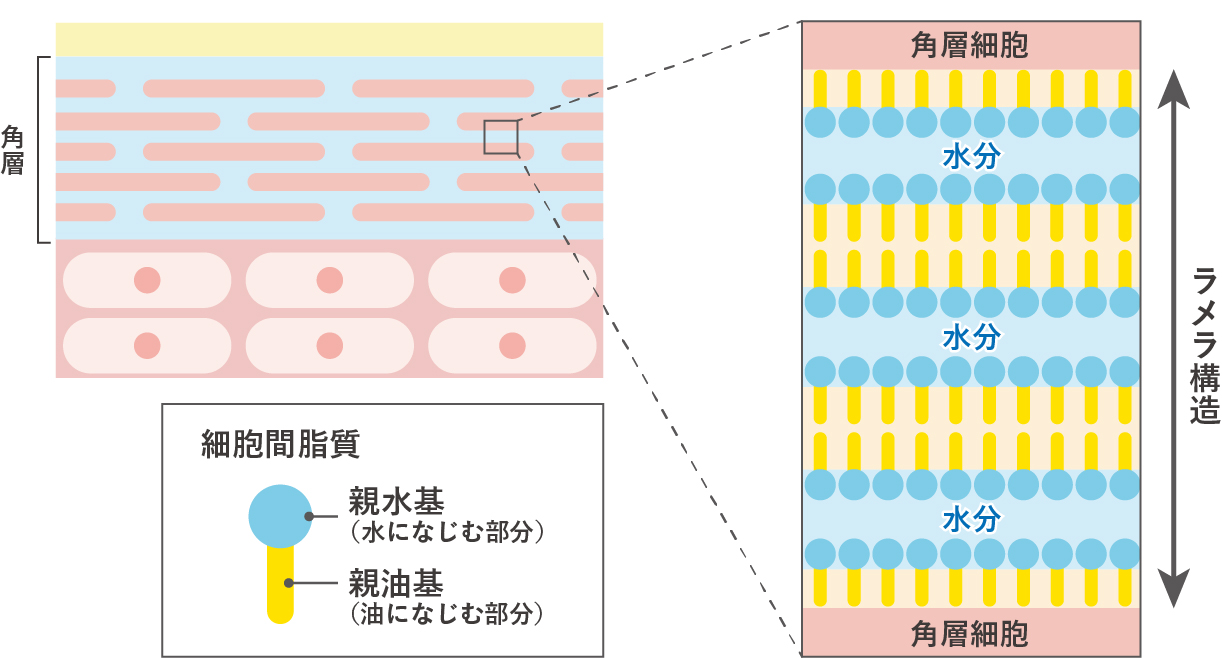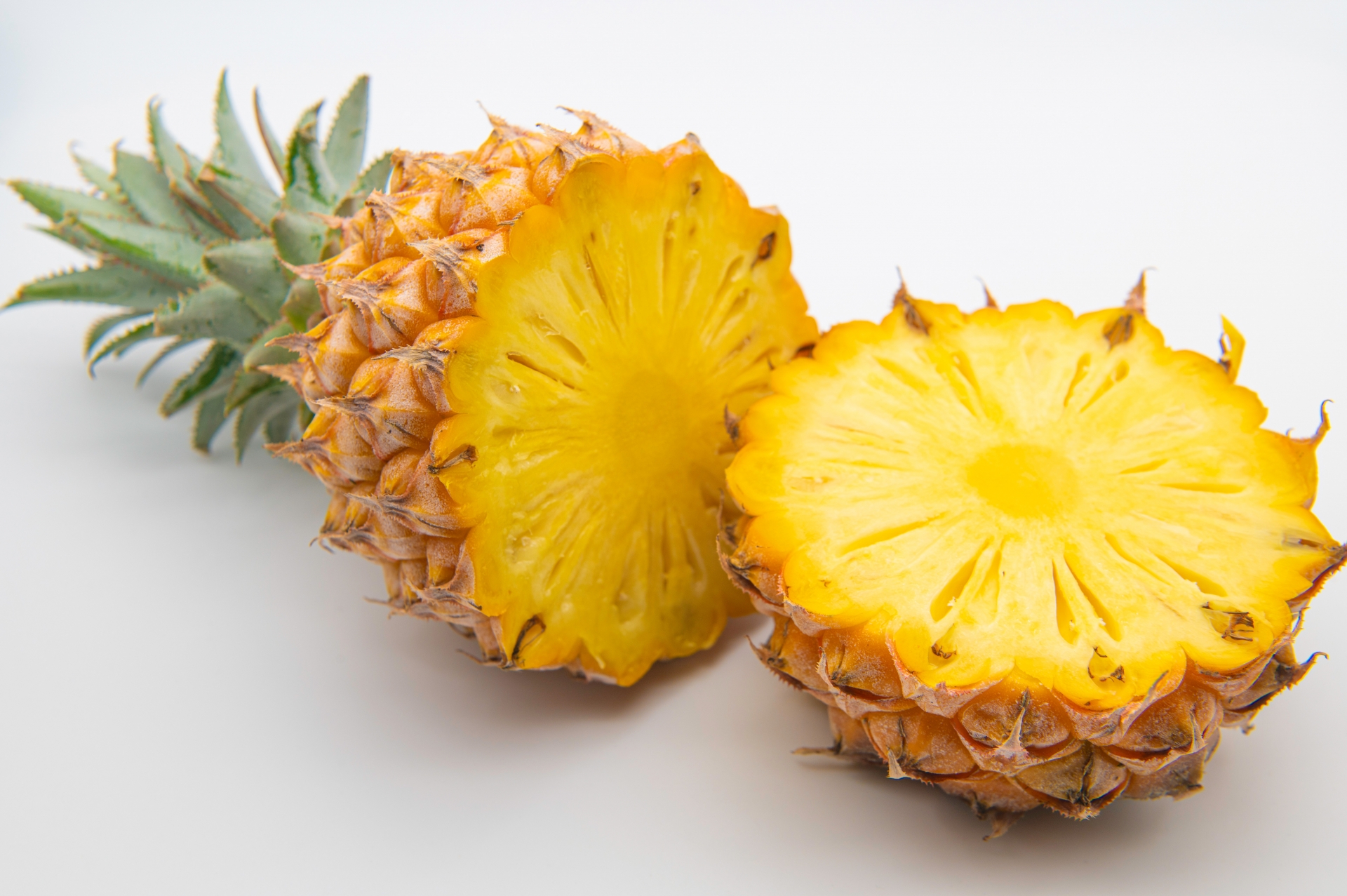The effects of pineapple ceramide on the skin’s barrier function
Introduction
Ceramides are a type of lipid found in the stratum corneum of the skin and are known to play a crucial role in maintaining the skin’s barrier function and moisture retention.
In recent years, “pineapple ceramide,” extracted from pineapples, and its main component, “glucosylceramide,” have attracted attention for their potential to support skin health.
What Are Ceramides?
Ceramides are lipids found in the stratum corneum of the skin and are the main component of intercellular lipids. It is known that when ceramides are deficient, the skin’s ability to retain moisture decreases, leading to dryness and a decline in barrier function.
This barrier function plays an important role in suppressing excessive water evaporation from within the skin, maintaining a certain level of moisture, and protecting the skin from external stimuli.
Ceramides form a “lamellar liquid crystal structure,” in which hydrophobic and hydrophilic layers are alternately stacked. This structure helps retain moisture in the skin and plays a role in protecting it from external irritants.

The Role of Glucosylceramide
Glucosylceramide is produced in the epidermis and changes into ceramide through breakdown in the stratum corneum. This process is linked to the skin’s turnover cycle and is important for maintaining healthy skin.
When glucosylceramide is deficient, the barrier function of the stratum corneum decreases, leading to an increase in water evaporation from the skin and potentially accelerating skin dryness.
Pineapple-Derived Ceramide
Pineapple ceramide is a type of phytoceramide (plant-derived ceramide) extracted from the peel and leaves of the pineapple. It has high skin affinity and is being actively studied for its potential to support the skin’s barrier function.
Ceramides are intercellular lipids found in the stratum corneum of the skin and play a vital role in maintaining moisture and enhancing the skin’s barrier function. This barrier is essential for preventing moisture loss from the skin and protecting it from external aggressors.
Reference:https://cosmetic-ingredients.org/skin-conditioning-miscellaneous/8525/
Research on Pineapple Ceramide
A study conducted in 2016 evaluated the effects of products containing pineapple ceramide on skin barrier function. The study confirmed the effect of promoting ceramide synthesis and suggested its potential to contribute to suppressing moisture evaporation from the skin.
Glucosylceramides were identified in pineapple fruit, leading to the development of a pineapple fruit extract containing glucosylceramides (PFEG), whose beneficial effects on the skin were subsequently evaluated. PFEG was shown to increase the expression of genes related to skin hydration and to promote ceramide production by upregulating ceramide-synthesizing enzymes, thereby enhancing the skin’s barrier function.
Reference:https://www.jstage.jst.go.jp/article/sccj/50/4/50_306/_article/-char/ja/
References
Supervisor

- President
- Born in Gunma Prefecture in 1965, he completed his doctoral studies at the Graduate School of Agricultural Science at Tokyo University of Agriculture (PhD), and served as a special research fellow at the Japan Society for the Promotion of Science, a part-time lecturer at Tokyo University of Agriculture, and an associate professor and professor at Takasaki University of Health and Welfare before becoming a professor at Tokyo University of Agriculture in April 2012. He is a professor at the same graduate school, and will be the president of Tokyo University of Agriculture in April 2021. He will be the chairman of Tokyo University of Agriculture in July 2023.
School he attended
April 1984 - March 1988 Graduated from the Department of Forestry (Forestry Science Course), Faculty of Agriculture, Tokyo University of Agriculture
Degrees he received
Tokyo University of Agriculture - Doctor of Forestry
Career history within the university
April 2012 - Ongoing Professor, Department of Forest Science, Faculty of Regional Environmental Science, Tokyo University of Agriculture
April 2016 - Ongoing Director, Food and Agriculture Museum, Tokyo University of Agriculture (Other organizations)
April 2021 - Ongoing President, Tokyo University of Agriculture
Academic societies and committees he has been affiliated with
April 1985 - Ongoing Japan Wood Research Society
June 1988 - Ongoing Japanese Mushroom Society
April 1995 - Ongoing Japanese Society of Inflammatory and Regenerative Medicine
April 1995 - Ongoing Japanese Society of Bioscience, Biotechnology, and Agricultural Chemistry
May 1995 - Ongoing Applied Pharmacology Research Society
Latest Posts
- November 27, 2025 Functionality of pineapple ceramide Clinical trial: Effects on moisturizing efficacy
- October 30, 2025 Functionality of pineapple ceramide Pineapple Cultivation and Nutritional Value
- September 30, 2025 Functionality of pineapple ceramide Storage Methods and Tips for Maintaining the Freshness of Pineapple
- August 27, 2025 Functionality of pineapple ceramide Mechanisms of Melanin Suppression and Spot Prevention by Pineapple Ceramide
- February 19, 2025 Functionality of pineapple ceramide Possibility of ceramide, a component derived from pineapple









